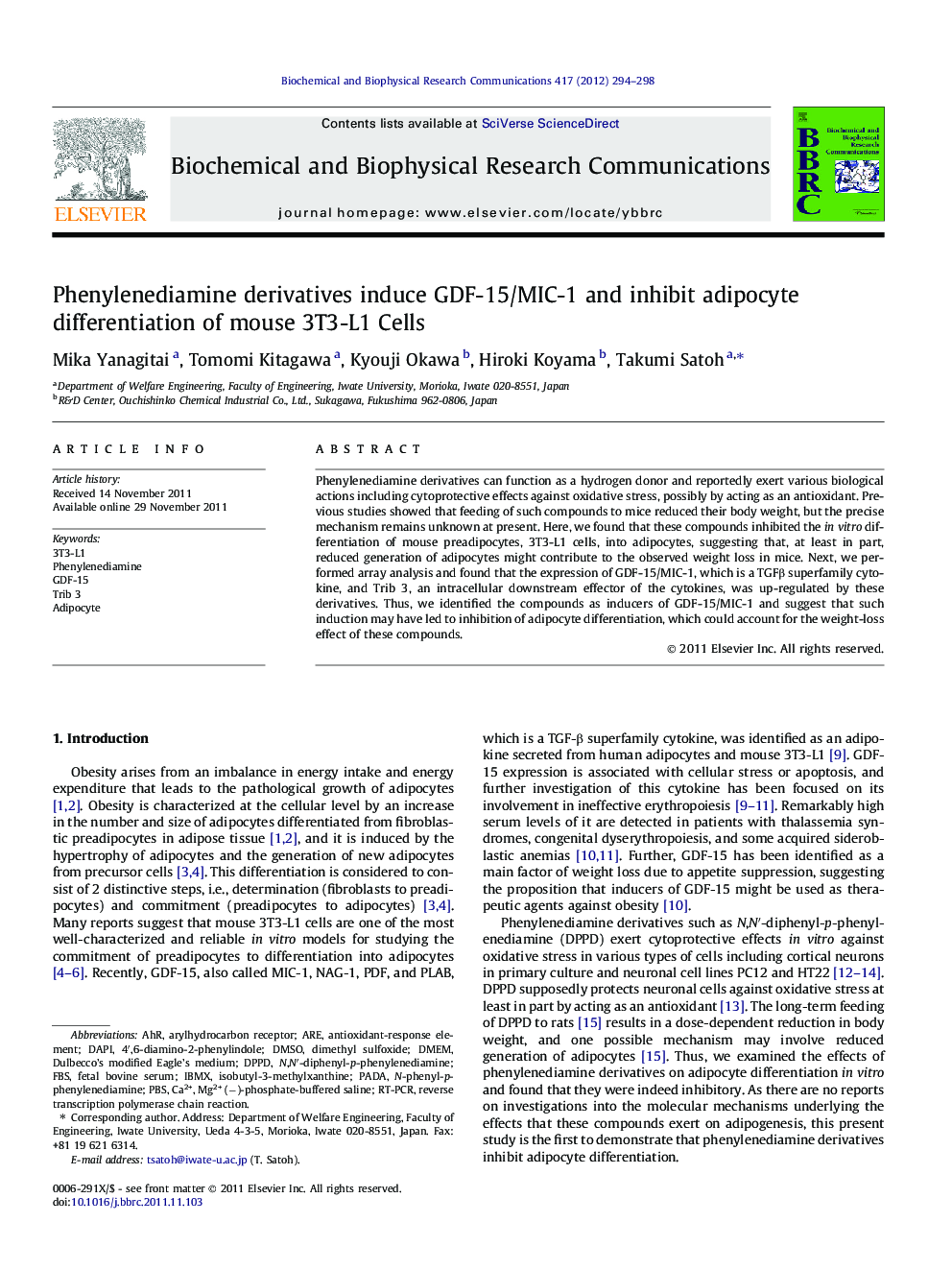| Article ID | Journal | Published Year | Pages | File Type |
|---|---|---|---|---|
| 1930116 | Biochemical and Biophysical Research Communications | 2012 | 5 Pages |
Phenylenediamine derivatives can function as a hydrogen donor and reportedly exert various biological actions including cytoprotective effects against oxidative stress, possibly by acting as an antioxidant. Previous studies showed that feeding of such compounds to mice reduced their body weight, but the precise mechanism remains unknown at present. Here, we found that these compounds inhibited the in vitro differentiation of mouse preadipocytes, 3T3-L1 cells, into adipocytes, suggesting that, at least in part, reduced generation of adipocytes might contribute to the observed weight loss in mice. Next, we performed array analysis and found that the expression of GDF-15/MIC-1, which is a TGFβ superfamily cytokine, and Trib 3, an intracellular downstream effector of the cytokines, was up-regulated by these derivatives. Thus, we identified the compounds as inducers of GDF-15/MIC-1 and suggest that such induction may have led to inhibition of adipocyte differentiation, which could account for the weight-loss effect of these compounds.
► Phenylenediamine derivatives inhibited adipocyte differentiation. ► They also induced GDF-15/MIC-1, a TGFβ superfamily cytokine, and Trib 3, its intracellular effector. ► The induction of GDF-15/MIC-1 may have mediated the weight-loss effect of phenylenediamine derivatives.
